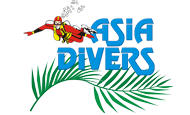If you happen to be in Manila September 9th to 11th, drop by and visit us at the DRT show. The Diving & Resort Travel Expo is a 3 day event being held from 9th September to the 11th September 2016 at the SM Megatrade Hall in Pasay, Philippines. This event showcases product from Marine & Boat, Travel & Tourism industries. Tommy, Dave and Alli will be there at Ocean Dive Supply and Tech Asia booths.
Show hours:
9th—11th Sept 2016 – 12.00am – 8.00pm
10th Sept: 12.00am-7.00pm
11th Sept: 12.00am-6.00pm
There will be many interesting guest speakers at the DRT show, including our good friend Beth Watson. Beth is an amazing photographer and has done a lot of her work here in Puerto Galera.
Check out her presentations:
Date & Time: 10 September 03:50-04:30pm
Topic: Shooting Wide Angle – A Path to Freedom
Venue: Stage B
Date & Time: 11 September 03:00-03:40pm
Topic: The Photographer’s Friends – Breathing, Buoyancy & Bubbles
Venue: Stage A




 TripAdvisor Certificate of Excellence
TripAdvisor Certificate of Excellence











